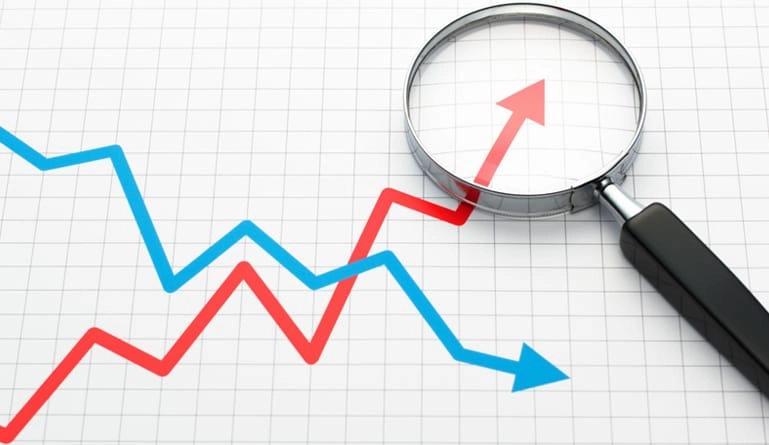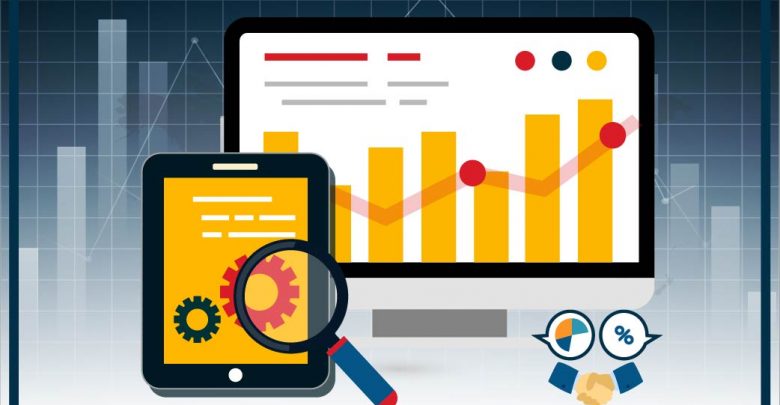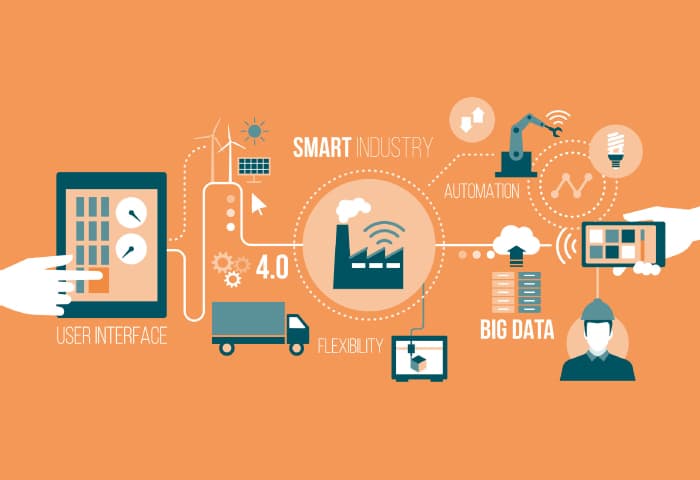
Maximizing Conversions: The Power of Lead Qualification in B2B Marketing
September 19, 2025
The Art of AI-Driven Ad Creative Design for Marketing Success
September 19, 2025In today’s fast-paced business landscape, staying ahead of the competition is more challenging than ever. To thrive in this dynamic environment, businesses need to harness the power of data-driven decision-making. Market forecasting, especially when integrated with AI marketing strategies, has emerged as a game-changer. In this comprehensive guide, we’ll delve deep into the world of market forecasting, exploring its significance, methods, and how it can revolutionize your marketing efforts.

Understanding Market Forecasting
Market forecasting is a critical component of modern business strategy. It’s the art and science of predicting future market conditions, trends, and consumer behavior based on historical data and statistical analysis. In a world where change is the only constant, mastering market forecasting is akin to possessing a crystal ball that allows businesses to make informed decisions and navigate the turbulent waters of commerce with confidence.
What Is Market Forecasting?
Market forecasting goes beyond mere speculation; it relies on a structured approach that blends data analysis, statistical modeling, and domain expertise. It involves the examination of historical data, market trends, and various influencing factors to generate forecasts. These forecasts encompass a wide range of aspects, including sales volumes, consumer preferences, economic conditions, and industry-specific metrics.
The goal is not just to make guesses about the future but to develop actionable insights that guide strategic decisions. Market forecasting is a tool that provides businesses with a roadmap for their journey ahead.
Why Is Market Forecasting Crucial for Businesses?
In today’s hyper-competitive business landscape, the ability to make well-informed decisions can be the difference between thriving and merely surviving. Market forecasting offers several compelling reasons why it’s indispensable for businesses:
-
Risk Mitigation: Businesses face a multitude of risks, from changing consumer preferences to economic downturns. Market forecasting allows for proactive risk management by identifying potential threats and providing strategies to mitigate them.
-
Resource Optimization: Wastage of resources can be costly. Market forecasts help businesses allocate resources efficiently by providing insights into where investments will yield the highest returns.
-
Competitive Advantage: In an era where everyone has access to vast amounts of data, the ability to leverage this data for predictions can set a business apart. It enables companies to position themselves as industry leaders who are ahead of market trends.
-
Customer Satisfaction: Meeting customer demands accurately is crucial for building loyalty. Market forecasting ensures that businesses have the right products or services at the right time, enhancing customer satisfaction and loyalty.
The Link Between Market Forecasting and AI Marketing
The integration of market forecasting with AI marketing strategies is where the magic happens. AI marketing leverages artificial intelligence and machine learning to automate and optimize marketing efforts. Market forecasting contributes by providing data-backed predictions that fuel AI algorithms. This synergy allows for highly personalized and efficient marketing campaigns, ultimately leading to improved ROI.
Imagine an AI algorithm that can analyze market forecasts and customer data to deliver personalized product recommendations to individual customers. Such a strategy not only increases the chances of conversion but also enhances the overall customer experience.
Real-Life Success Stories: How Market Forecasting Transformed Businesses
The power of market forecasting is evident in several real-life success stories:
-
Netflix: The streaming giant utilizes market forecasting to recommend personalized content to its users. By analyzing user behavior and preferences, Netflix’s recommendation engine keeps viewers engaged and subscribed.
-
Amazon: Amazon’s dynamic pricing strategy is underpinned by real-time market forecasting. The e-commerce giant constantly adjusts prices based on demand, competition, and other factors. This optimization maximizes sales and profitability while ensuring that Amazon remains competitive in the market.
In both cases, market forecasting plays a pivotal role in shaping their strategies, underscoring its significance in the modern business landscape.

Methods of Market Forecasting
The effectiveness of market forecasting depends heavily on the methods employed. There are various approaches, each suited to different scenarios and data types. Understanding these methods is crucial for businesses aiming to master market forecasting.
Quantitative vs. Qualitative Forecasting
Market forecasting methods can be broadly categorized into quantitative and qualitative approaches.
-
Quantitative Forecasting: This method relies on numerical data and statistical techniques. It’s highly objective and involves analyzing historical data to identify patterns and trends. Techniques like time series analysis and regression analysis fall under this category. Quantitative forecasting is especially useful when dealing with historical sales data, financial metrics, and other quantifiable variables.
-
Qualitative Forecasting: In contrast, qualitative forecasting is subjective and relies on expert judgment and opinions. It’s often used when historical data is scarce or when factors like consumer sentiment and political events play significant roles. Techniques like market research, surveys, and the Delphi method fall under qualitative forecasting. This approach is valuable for anticipating changes in consumer preferences, emerging trends, and potential disruptors.
Time Series Analysis
Time series analysis is a fundamental quantitative forecasting method. It involves examining data points collected over time to identify patterns and trends. This method is particularly useful when dealing with data that is chronologically ordered, such as monthly sales figures, stock prices, or weather data.
Time series analysis uses various statistical techniques, including moving averages, exponential smoothing, and autoregressive integrated moving average (ARIMA) models. These techniques help uncover underlying patterns in the data, such as seasonality, trends, and cyclical fluctuations.
One of the key advantages of time series analysis is its ability to provide short-term and long-term forecasts. For example, retailers can use time series analysis to predict seasonal fluctuations in demand, allowing them to stock inventory accordingly.
Machine Learning Algorithms for Market Forecasting
Machine learning has revolutionized market forecasting by enabling the analysis of vast datasets and the development of highly accurate predictive models. Machine learning algorithms, such as neural networks, decision trees, and random forests, excel at capturing complex relationships within data.
- Neural Networks: Neural networks, inspired by the human brain, are highly effective for forecasting tasks. They consist of interconnected nodes (neurons) organized in layers. Neural networks can capture intricate patterns in data, making them suitable for tasks like stock price prediction, demand forecasting, and anomaly detection.
- Decision Trees and Random Forests: Decision trees are simple yet powerful algorithms for classification and regression tasks. They work by partitioning data into subsets based on features, ultimately making predictions. Random forests, which consist of multiple decision trees, improve accuracy and robustness by averaging predictions from individual trees. These algorithms are versatile and find applications in various industries, from finance to healthcare.
- Support Vector Machines (SVM): SVM is a machine learning algorithm used for classification and regression tasks. It excels at identifying complex patterns and is valuable for forecasting tasks that involve separating data into different classes or predicting continuous values.
Sentiment Analysis and Social Media Insights
In the digital age, social media has become a treasure trove of data for market forecasting. Social media platforms are hubs of consumer sentiment, opinions, and trends. Analyzing this unstructured data can provide valuable insights that complement quantitative methods.
Sentiment Analysis : Sentiment analysis, also known as opinion mining, involves using natural language processing (NLP) techniques to determine the sentiment or emotion expressed in textual data. Businesses can use sentiment analysis to gauge how customers feel about their products, services, or brand as a whole.
For example, a hotel chain might use sentiment analysis to monitor online reviews and identify areas for improvement. By analyzing customer feedback, the chain can make data-driven decisions to enhance customer satisfaction.
Social Media Insights : Social media platforms generate vast amounts of data every second. Businesses can harness this data to gain insights into consumer behavior, preferences, and emerging trends. Platforms like Twitter, Facebook, and Instagram offer APIs and tools for accessing and analyzing social media data.
For instance, a fashion retailer can track mentions of fashion trends on social media to anticipate which styles are gaining popularity. By staying ahead of trends, the retailer can adjust its inventory and marketing campaigns to align with consumer preferences.

Implementing Market Forecasting in Your Marketing Strategy
Understanding market forecasting methods is just the beginning. To derive value from market forecasting, businesses must effectively implement it within their marketing strategies. Here’s a step-by-step guide to incorporating market forecasting into your marketing plan.
Step 1: Data Collection and Analysis
The foundation of market forecasting is data. Collecting and analyzing relevant data is the first and crucial step. Start by identifying the key data sources that will inform your forecasts. These sources may include:
-
Historical Sales Data: Your company’s past sales figures can reveal patterns, seasonality, and trends.
-
Customer Demographics: Understanding your customer base is essential. Demographic data can help segment your audience for targeted marketing.
-
Market Research: Industry reports, competitor analysis, and market surveys provide external insights.
-
Website Analytics: Data from your website can reveal customer behavior, traffic patterns, and conversion rates.
Once you’ve gathered data, conduct thorough analysis to identify patterns and trends. This analysis will inform your forecasting models.
Step 2: Choosing the Right Forecasting Method
Selecting the appropriate forecasting method depends on several factors, including:
-
Data Type: Is your data quantitative or qualitative? Different methods are better suited to each type.
-
Accuracy Requirements: Consider the level of accuracy required for your forecasts. Some industries demand precise predictions, while others can tolerate a margin of error.
-
Nature of the Industry: Certain industries have specific forecasting needs. For instance, retail relies heavily on demand forecasting, while finance focuses on stock price prediction.
It’s often beneficial to combine multiple forecasting methods for a more robust and accurate prediction. For example, a retail business might use time series analysis for short-term demand forecasting and qualitative market research for long-term trend analysis.
Step 3: Integrating Forecasting into Your Marketing Plan
Market forecasting should seamlessly integrate into your overall marketing strategy. Consider the following ways to incorporate forecasting into your plan:
-
Customized Marketing Campaigns: Use your forecasts to tailor marketing campaigns to different customer segments. For example, if your data indicates that certain customer groups prefer specific products, create targeted campaigns to appeal to their preferences.
-
Pricing Strategies: Dynamic pricing, informed by market forecasts, can optimize profits. Adjust prices based on demand, competitor pricing, and other factors to maximize revenue.
-
Inventory Management: Efficient inventory management relies on accurate demand forecasting. By anticipating spikes in demand, you can ensure that you have sufficient stock on hand without overstocking.
-
Content Planning: Content marketing can benefit from market forecasts. Use predictions to plan content that aligns with upcoming trends or seasonal shifts in consumer behavior.
Step 4: Monitoring and Continuous Improvement
Market conditions change, and so should your forecasting models. Implement a system for regular monitoring and evaluation. This involves:
-
Tracking Forecast Accuracy: Compare your forecasts to actual outcomes. Identify discrepancies and adjust your models accordingly.
-
Updating Data: Keep your data up to date. New data points can reveal changing trends or consumer preferences.
-
Refining Models: Periodically review and refine your forecasting models. As your business evolves, so should your forecasting methods.
By continually improving your forecasting approach, you can maintain accuracy and adapt to shifts in the market, ensuring that your marketing strategies remain effective.
Benefits and Challenges of Market Forecasting
Market forecasting offers a multitude of benefits that can significantly impact a business’s bottom line. However, it’s not without its challenges and potential pitfalls. Let’s delve into both aspects to gain a comprehensive understanding of this vital practice.
Benefits: How Market Forecasting Boosts ROI
-
Improved Resource Allocation: Efficient resource allocation is a cornerstone of successful businesses. Market forecasting provides the insight needed to allocate resources effectively. For example, if your forecasts indicate that certain products will see increased demand in the coming months, you can allocate more resources to their production and marketing.
-
Enhanced Marketing Campaigns: Tailoring your marketing efforts to match forecasted trends can lead to more effective campaigns. Instead of relying on one-size-fits-all approaches, you can craft messages and offers that resonate with specific customer segments. This personalization improves customer engagement and conversion rates.
-
Pricing Optimization: Pricing is a critical factor in profitability. With market forecasting, you can optimize pricing strategies. For instance, during periods of high demand, you can adjust prices upward to capture additional profit without alienating customers. Conversely, during slower periods, you can implement promotions to stimulate sales.
-
Inventory Management: Overstocking or understocking products can result in significant financial losses. Market forecasting helps strike the right balance by predicting demand accurately. This prevents over-investing in inventory or losing sales due to stockouts.
-
Customer Satisfaction: Ultimately, market forecasting contributes to customer satisfaction. When businesses have the products or services customers want when they want them, it fosters loyalty. Customers are more likely to return and recommend your brand to others when their needs are consistently met.
Challenges: Overcoming Data Limitations and Uncertainty
While the benefits of market forecasting are substantial, several challenges must be overcome to reap these rewards.
-
Data Quality: The accuracy of forecasts hinges on the quality of the data used. Inaccurate or incomplete data can lead to flawed predictions. Businesses must invest in data collection, validation, and cleaning processes to ensure the reliability of their forecasts.
-
External Factors: Market forecasting can’t predict unforeseen events, such as natural disasters, economic crises, or global pandemics. These external factors can disrupt markets and render forecasts obsolete. To mitigate this challenge, businesses must maintain flexibility in their strategies and be prepared to adapt rapidly when unexpected events occur.
-
Model Complexity: Advanced forecasting models, including those based on machine learning, can be complex. Ensuring that teams have the necessary expertise to develop and maintain these models is essential. Additionally, model interpretability can be a challenge, as complex models may lack transparency.
-
Continuous Learning: Market conditions evolve over time, requiring continuous learning and adaptation. What works today may not work tomorrow. Businesses must foster a culture of continuous improvement to stay competitive.
Case Study: The Impact of Accurate Market Forecasting
To illustrate the benefits of accurate market forecasting, let’s consider the case of Company X, a manufacturer of consumer electronics. Company X historically faced challenges in managing inventory due to the seasonal nature of its products.
By implementing accurate market forecasting, Company X achieved a 20% increase in revenue within the first year. Here’s how it happened:
-
Optimized Product Release Timing: Market forecasts allowed Company X to time product releases strategically. For example, they identified that demand for certain electronic gadgets peaked during the holiday season. By aligning product releases with these trends, they maximized sales.
-
Precision in Inventory Management: Accurate forecasts reduced excess inventory. Company X was no longer left with unsold products after seasonal peaks. This translated into cost savings and reduced storage expenses.
-
Higher Customer Satisfaction: Customers could consistently find the products they desired, leading to increased satisfaction and repeat business.
Company X’s success story exemplifies how market forecasting can revolutionize businesses, ensuring they meet customer demands precisely and operate more efficiently.

AI Marketing: Enhancing Strategies with Market Forecasting
AI marketing is at the forefront of modern marketing strategies, and it’s intricately linked with the practice of market forecasting. Here, we explore how AI can enhance marketing efforts by leveraging market forecasts.
Personalization at Scale
One of the primary benefits of AI marketing is personalization at scale. It enables businesses to deliver highly personalized experiences to individual customers based on their preferences, behaviors, and, importantly, market forecasts.
Consider an e-commerce website that uses AI algorithms to recommend products to its users. These recommendations can be informed by market forecasts, ensuring that customers are shown products that align with emerging trends and consumer preferences. This level of personalization increases engagement and conversion rates.
AI-driven personalization doesn’t stop at product recommendations. It can extend to email marketing, content customization, and even dynamic website experiences. By tailoring interactions to each customer, businesses can create stronger connections and drive more sales.
Dynamic Pricing Optimization
Dynamic pricing is a pricing strategy that adjusts product prices in real-time based on various factors, including demand, competitor pricing, and market conditions. It’s a strategy that can significantly impact profitability when coupled with market forecasting.
AI algorithms can continuously analyze market forecasts, competitor pricing, and historical data to determine the optimal price for products or services. For example, during periods of high demand, prices can be increased to maximize profits. Conversely, during slow periods, prices can be lowered to attract price-sensitive customers.
Dynamic pricing is particularly prevalent in industries like e-commerce, travel, and hospitality. It allows businesses to remain competitive and maximize revenue in a dynamic market landscape.
Content Marketing and Customer Segmentation
AI can supercharge content marketing efforts by harnessing the power of market forecasts. Here’s how it works:
-
Market Forecast Insights: Market forecasts provide valuable insights into emerging trends, seasonal fluctuations, and shifts in consumer behavior. AI algorithms can process these forecasts and identify content opportunities.
-
Content Customization: With market insights in hand, AI can customize content to align with current market dynamics. For instance, a fashion retailer can create content that highlights trending styles based on market forecasts.
-
Segmentation and Targeting: AI can segment customers based on their preferences and behaviors. It can then deliver tailored content to different customer segments. For example, if the market forecast indicates an upcoming surge in interest for outdoor sports equipment, AI can target customers who have shown an affinity for outdoor activities with relevant content and product recommendations.
-
Content Timing: Market forecasts can also inform the timing of content distribution. For instance, if the forecast predicts a peak in demand for holiday-related products, AI can schedule content releases accordingly.
By combining market forecasts with AI-driven content marketing, businesses can create content that resonates with their audience, drives engagement, and leads to conversions.
AI-Driven Ad Campaigns
AI’s role in advertising extends beyond content customization. It can optimize the entire ad campaign process, from ad creation to placement and performance analysis.
- Ad Creation : AI can generate ad creatives based on market forecasts and customer data. For example, an AI algorithm can create ad copy and visuals that align with trending keywords or themes in the market. This ensures that ad content remains relevant and timely.
- Ad Placement : AI algorithms can determine the most effective placement for ads. They analyze market forecasts, customer demographics, and user behavior to identify the platforms and channels where ads are likely to perform best. This optimization minimizes ad spend wastage.
- Performance Analysis : AI provides real-time insights into ad campaign performance. It tracks key metrics like click-through rates, conversions, and return on ad spend (ROAS). If an ad campaign isn’t meeting its objectives, AI can make automatic adjustments, such as reallocating budget to more successful ads or changing targeting criteria.
In summary, AI-driven ad campaigns leverage market forecasts to create, place, and optimize ads effectively, resulting in higher ROI and improved campaign outcomes.

Future Trends in Market Forecasting and AI Marketing
The landscape of market forecasting and AI marketing is ever-evolving. To stay competitive and maximize the benefits of these practices, it’s essential to be aware of emerging trends and developments. Here are some future trends that are likely to shape the field.
The Role of Big Data and IoT
The proliferation of big data and the Internet of Things (IoT) is set to redefine market forecasting and AI marketing. These trends provide access to an unprecedented volume of data from various sources.
Big Data
Big data encompasses vast datasets that exceed the processing capabilities of traditional data analysis tools. Market forecasters and AI marketers can harness big data to gain deeper insights into consumer behavior, market trends, and emerging patterns. For example:
-
Real-Time Data: Big data allows for the analysis of real-time data streams, enabling businesses to react swiftly to changing market conditions.
-
Granular Customer Profiles: Businesses can create highly detailed customer profiles by combining data from various sources, enabling more precise targeting and personalization.
-
Predictive Analytics: Big data and advanced analytics techniques can fuel predictive analytics models that forecast market trends with exceptional accuracy.
IoT
The IoT refers to the network of interconnected devices that collect and share data. These devices range from smart thermostats and wearable fitness trackers to industrial sensors. IoT data can be a goldmine for market forecasting and AI marketing:
-
Supply Chain Optimization: IoT sensors can track inventory levels, monitor product conditions (e.g., temperature and humidity), and predict maintenance needs, leading to more efficient supply chains.
-
Personalization: IoT devices can provide real-time data on consumer behavior, such as location, preferences, and usage patterns. AI algorithms can use this data to deliver hyper-personalized experiences.
-
Predictive Maintenance: In industries like manufacturing, IoT sensors can predict equipment failures, reducing downtime and maintenance costs.
As big data and IoT continue to evolve, market forecasters and AI marketers will need to develop strategies for managing and extracting insights from these vast datasets.
Predictive Analytics Beyond Marketing
The application of predictive analytics is extending beyond marketing. Businesses are increasingly using predictive models to inform various aspects of their operations:
- Product Development : Predictive analytics can help businesses identify product opportunities and refine product features based on market demand and consumer feedback. By analyzing market forecasts and customer data, companies can develop products that align with emerging trends.
- Supply Chain Management : Predictive analytics plays a pivotal role in optimizing supply chain operations. Businesses can use forecasts to anticipate changes in demand, optimize inventory levels, and ensure timely delivery of products. This leads to cost savings and enhanced customer satisfaction.
- Financial Decision-Making : Financial institutions leverage predictive analytics to assess credit risk, detect fraudulent activities, and make investment decisions. Market forecasts and economic indicators are vital inputs into these models, allowing financial institutions to make informed choices.
As predictive analytics becomes more pervasive, businesses in various industries will increasingly rely on market forecasts and data-driven insights to make critical decisions.
Ethical Considerations in AI Marketing
As AI marketing advances, ethical considerations become increasingly important. Market forecasts and AI algorithms have the potential to impact individuals’ lives in profound ways, and businesses must navigate these ethical challenges responsibly.
- Data Privacy : The collection and use of personal data for AI marketing raise significant privacy concerns. Businesses must adhere to data protection regulations and obtain explicit consent from individuals for data usage. Transparent data handling practices and robust cybersecurity measures are crucial.
- Bias and Fairness : AI algorithms can inadvertently perpetuate bias if trained on biased data. Businesses must actively work to eliminate bias in their AI models, especially in areas like hiring, lending, and pricing. Fairness assessments and regular audits of AI systems are essential.
- Transparency : The opacity of AI algorithms presents challenges in understanding how decisions are made. Businesses should prioritize transparency and provide explanations for AI-driven decisions whenever possible, especially when they impact individuals.
- Accountability : In the event of AI-related errors or harm, businesses must take responsibility and have mechanisms in place for remediation. Accountability extends to ensuring that AI systems align with ethical principles and societal values.
Navigating these ethical considerations is integral to building trust with customers and stakeholders and ensuring the responsible use of AI in marketing and market forecasting.
In conclusion, mastering market forecasting is not just a choice for businesses; it’s a necessity in today’s dynamic and competitive landscape. This guide has explored the intricate world of market forecasting, its methods, implementation strategies, and the symbiotic relationship it shares with AI marketing.
By understanding the significance of market forecasting and its benefits, businesses can make informed decisions that drive growth, optimize resources, and enhance customer satisfaction. The combination of quantitative and qualitative forecasting methods, coupled with AI marketing, empowers businesses to tailor their strategies to changing market dynamics with precision.
Moreover, as market forecasting and AI marketing continue to evolve, staying ahead of the curve is paramount. Embracing big data, IoT, and predictive analytics offers new opportunities for businesses to gain a competitive edge. However, ethical considerations must remain at the forefront of AI marketing practices to ensure responsible and customer-centric decision-making.
The path to market dominance begins with mastering market forecasting and embracing the transformative power of AI marketing. By doing so, businesses can position themselves as leaders in their industries, adapt to evolving market conditions, and thrive in an ever-changing world.


